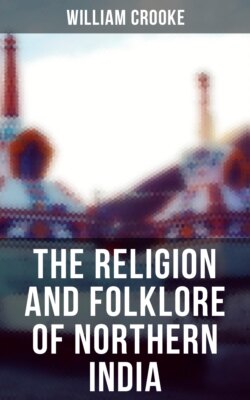Читать книгу The Religion and Folklore of Northern India - William Crooke - Страница 70
На сайте Литреса книга снята с продажи.
Mother-worship in Gujarât.
ОглавлениеTable of Contents
But it is in Gujarât that this form of worship prevails most widely at the present day. Sir Monier-Williams enumerates about one hundred and forty distinct Mothers, besides numerous varieties of the more popular forms. They are probably all local deities of the Churel type, who have been adopted into Brâhmanism. Some are represented by rudely carved images, others by simple shrines, and others are remarkable for preferring empty shrines, and the absence of all visible representations. Each has special functions. Thus one called Khodiâr, or “mischief,” is said to cause trouble unless propitiated; another called Antâî causes and prevents whooping cough; another named Berâî prevents cholera; another called Marakî causes cholera; Hadakâî controls mad dogs and prevents hydrophobia; Asapurâ, represented by two idols, satisfies the hopes of wives by giving children. Not a few are worshipped either as causing or preventing demoniacal possession as a form of disease. The offering of a goat’s blood to some of these Mothers is regarded as very effectual. A story is told of a Hindu doctor who cured a whole village of an outbreak of violent influenza, attributed to the malignant influence of an angry Mother goddess, by simply assembling the inhabitants, muttering some cabalistic texts, and solemnly letting loose a pair of scapegoats in a neighbouring wood as an offering to the offended deity. One of these Mothers is connected with the curious custom of the Couvade, which will be discussed later on.57 Another famous Gujarât Mother is Ambâ Bhavânî. On the eighth night of the Naurâtra the Râna of Danta attends the worship, fans the goddess with a horsehair fly-flapper, celebrates the fire sacrifice, and fills with sweetmeats a huge cauldron, which, on the fall of the garland from the neck of the goddess, the Bhîls empty. Among the offerings to her are animal sacrifice and spirituous liquor. The image is a block of stone roughly hewn into the semblance of a human figure.58
